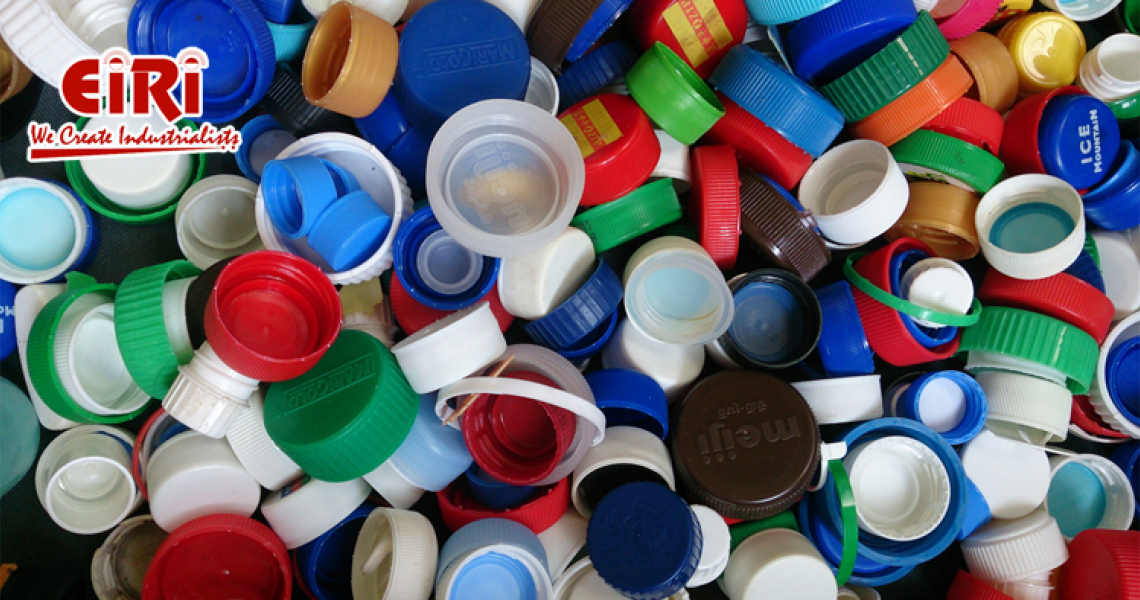Challenges and future prospects for the plastic cap industry in India

A plastic cap is mainly used for sealing the top of bottles, containers, jars, and tubes thereby showing ways to ensure more protection of the content. The Indian plastic cap industry is witnessing huge growth over the recent years and is expected to increase in the future markets. It can see a growth rate of 6.2% that will drive plastic cap industries. On the other hand, the industry is facing some challenges and should know how to overcome them.
According to a recent report by Research and Markets, the plastic caps and closures market in India is expected to grow at a compound annual growth rate (CAGR) of approximately 11.5% between 2021-2026. The growth is driven by factors such as the increasing demand for convenience packaging and the growth of end-use industries like food and beverage, pharmaceutical, and personal care.
Additionally, the Indian government's initiative to promote sustainable packaging and reduce plastic waste is expected to provide opportunities for growth and innovation in the plastic caps and closures market.
What are the market trends to watch out for in the Indian plastic cap industry?
1. Automation
Automation is the major trend that will dominate the Indian plastic cap industry during the forecast period due to an increase in demand. It provides methods to boost the efficiency of the molding process to gain more advantages.
2. Innovative closure design enhances brand image
Innovative closure design will enhance the brand image of a company in future markets to grab the attention of more customers. As a result, manufacturers have to focus more on complex structures and colors that may become an emerging trend.
3. High adoption of lightweight caps
Lightweight plastic caps will become a major trend in future markets because they provide ways to reduce production costs and enable manufacturers to attain sustainability. Many companies invest money in designing and producing stylish and lightweight caps for various products.
4. Digitization
The rapid development of digitization today opens up new prospects in the manufacturing process. Advancements in information technologies will lead to greater integration of process flow and may increase transparency in the production process.
5. IOT
IoT (Internet of Things) may become a new trend in the plastic cap industry because it will help make an informed decision. Furthermore, it will help achieve efficiency and automate operations to a large extent.
6. Recycling may become a new trend
Consumers make their best decisions by considering their personal carbon footprint and recycling products may become a new trend in future markets. Recycling products can protect the environment from potential threats.
What are the future prospects of the plastic gap industry in India?
1. Rising demand for convenience packaging & small bottles may drive growth rates
The demand for convenience packing & small bottles will drive the growth rate of the plastic gap industry in future markets. Moreover, the rising usage of small-sized bottles in beverages pharmaceutical, food, and mineral water production may increase the demand for plastic caps.
2. The growing Western culture will increase the sales
The urban cities in India are following the Western culture that may influence the growth of the plastic cap industry. This is because most people like to use disposable water bottles, syrups, soft drinks, etc.
3. Development of customized items may induce growth rates
Plastic cap manufacturers are developing customized products in various sizes and shapes to cater to the needs of end users.
4. Unique properties of plastic caps will increase the demand
Plastic caps of unique caps will increase the demand in future markets. Some of them include lightweight, durability, stability, and corrosion resistance that can drive growth rates.
What are the challenges faced by plastic cap industries in India?
1. Strict regulations by the Indian government on plastic products
The Indian government has imposed strict rules and regulations regarding the use of plastic products. It emphasizes reducing the applications of plastic items in various industries that may hamper growth rate. Furthermore, manufacturers have to follow the rules and regulations that can limit productivity.
2. Recycling programs are not effective
While recycling offers the best solutions for plastic caps, the program is not being launched effectively. Many manufacturers face difficulties in implementing a recycling program due to the lack of knowledge and other factors.
3. High costs of raw materials
The costs of raw materials are increasing over recent years and plastic cap industries have to spend more on them. As a result, manufacturers face difficulties in achieving their targets which can affect the growth rates.
4. Implementing new technologies is becoming difficult
Plastic cap manufacturers have to embrace the latest technologies such as 3D printing, artificial intelligence, and IoT in the designing process. However, they are not easy and need proper guidance from technical experts.
5. Lack of skilled workforce
A skilled workforce is necessary for plastic cap production and many companies face a shortage of experienced employees. This will result in low productivity which can affect the growth rate significantly.
6. Awareness about eco-friendly products may force industries to invest additional money
The awareness about eco-friendly plastic products is increasing in recent years which may impact the growth. Also, plastic cap manufacturers have to implement innovative ideas to design products with unique designs.
7. High competition may impact the growth
Nowadays, many start-ups are entering the plastic cap industry which can increase the competition in the market which will affect the growth rates.










